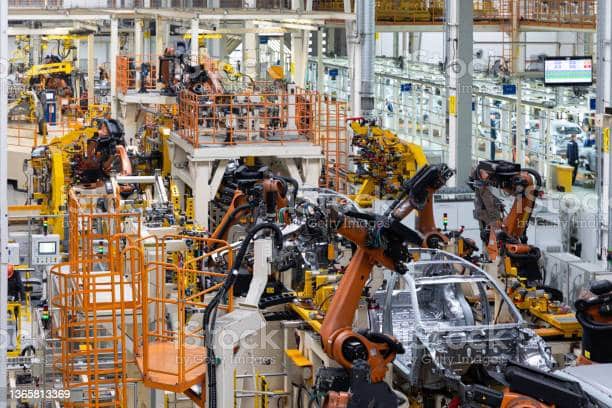Although once in the same category as flying cars and robot maids, autonomous vehicles are now a reality.
But as they become more common, what do fleet managers need to know, and how can the history of horses help?
What is a working definition of autonomous vehicles?
An autonomous vehicle (AV) is a self-driving vehicle that can sense its surroundings, allowing it to move through its environment with little to no human input.
Generally, the vehicle uses a combination of sensors, including heat-sensitive cameras, radar, sonar, GPS, odometry, and inertial measurements, which can include specific force, angular rate, and orientation. The sensors send captured data to control systems that use it to find the right route while avoiding obstacles.
Both names, autonomous and self-driving, can be misleading, though, because in both cases, they suggest binaries. It sounds like either a vehicle can drive itself or it can’t. But the current state of development includes a spectrum of capabilities.
What are the six levels of automation for vehicles?
The Society of Automotive Engineers (SAE), an international association that creates standards, has developed six district categories for automotive automation.
Level 0: Zero automation
At this level, automation is restricted to features such as cruise control. Most vehicles today fall into this category.
Level 1: Driver assistance, hands on/shared control
Here, your cruise control has become a bit smarter, and the vehicle slows itself when it detects traffic ahead. Another feature at this level is lane assist, where the vehicle warns you when you’ve started to drift out of your lane.
In both cases, the driver is still in complete control.
Level 2: Partial automation, hands off
Although the driver still needs to keep their hands on the wheel at all times, the car is doing more of the driving, including maintaining the right distance between itself and the cars ahead. The car always actively controls some of the steering, allowing it to keep itself centered in the lane.
Level 3: Conditional automation, eyes off
The conditional part of the name means “ideal conditions,” and at this level, the vehicle can drive itself, for example, on a divided highway up to a certain speed.
Although the driver still needs to be in the driver’s seat, technically they don’t need to have their hands on the steering wheel.
Level 4: High automation, mind off
At this level, the vehicle can drive itself in most, but not all, conditions. Driver interaction here is minimal and might only include giving the vehicle your destination.
Level 5: Full automation, steering wheel optional
The best way to understand this level of automation is to look at not what the vehicle has but what it’s missing: a steering wheel and pedals.
In all conditions and without any driver input, the vehicle can safely drive itself.
What are the promised benefits of self-driving cars for fleet managers?
It likely makes more sense to call them driverless vehicles, and changing the name makes it easier to understand the two main selling points: when you remove the driver, you cut costs while boosting safety.
Lower costs
Although there are many different ways you can pay drivers, one thing never changes: you have to pay them.
But with a driverless car, you don’t. You save not only on direct labor costs but also the time, money, and resources it takes to train, manage, and complete payroll for drivers.
Better safety
Software never gets tired and never gets distracted. Theoretically, it’s always on, always at 100%. But even the best drivers, strictly following all the rules related to rest, can have a bad day, leading to costly damage to everything from the vehicle to your business’s reputation. Even relatively small accidents can be devastating, potentially exposing your organization to criminal charges and civil litigation.
How much safer are AVs? Department of Transportation research suggests that eliminating accidents caused by driver error could lead to an overall reduction of up to 94% of traffic fatalities.
What are the challenges for fleet managers adopting self-driving cars?
The irony of managing a fleet of self-driving cars is that it likely takes even more direct control. The more the vehicles drive themselves, the more there is for the fleet manager to navigate, including both decisions at the start of the implementation process as well as ongoing concerns once everything is up and running.
The most obvious are the needs for new tech and talent. Maintaining a fleet of AVs requires specialized tools and people who know how to use them. But there are additional challenges, and many of them are less obvious but equally important.
More complicated insurance policy decisions
Although it’s still uncertain how exactly, there’s no question that AVs are set to change the auto insurance industry.
For example, currently, your insurance provider ties your rates to your drivers. So, an older driver with a longer accident-free record costs you less in premiums than a younger driver with history of accidents. But when your vehicles are truly autonomous, insurance companies will have to switch to product liability, where in the case of an accident, they go after whoever programmed and provided the AI driving the vehicle.
Ideally, once there are enough AVs on the road to basically eliminate the possibility of driver error, premiums should go down. But there is also a chance they won’t. Remember, all those sensors are expensive, so even a small fender-bender carries significant costs.
Fleet managers will have to work with insurance companies to find coverage that makes sense for everyone.
Increased overall traffic congestion
For the average car consumer, let’s say a one-car family of four, part of the appeal of self-driving cars is never having to worry about traffic. Instead of staying focused on the bumper directly in front of you as you inch along, you can watch a show, read a book, or even take a nap.
But even though your time in the car might be subjectively better, there’s a good chance it’s going to be objectively longer. AVs are very likely to increase overall traffic.
Remember, a level five driverless car can just as easily be passenger free. If your car can drive you to the store, it can also drive itself, encouraging people to send their personal vehicles out on small errands throughout the day. And smaller businesses that currently cannot offer delivery because of the cost of drivers will quickly invest in a few AVs, adding more traffic to the roads.
And when people use their AVs for a quick trip, it will often make more sense to have it circling the block instead of finding a place to park. Imagine you want to go shopping downtown, where there are lots of stores but no free parking. To save money, you have the car drop you off and then drive around the area aimlessly until you call it to come pick you up. Considering the cost of parking and the cost of gas, having the car drive in circles saves money. And as electric vehicles become more common, the decision will become even easier. Spending a bit of your battery charge is always going to be cheaper than paying for parking. The end result is more traffic.
And more traffic means more careful planning for fleet managers who need to decide on reliable routes for their vehicles. It means understanding that automation will actually slow things down, and that that quick delivery across town might soon take hours.
What can fleet managers learn by looking at older transportation technology?
It’s not a perfect science, but it’s sometimes possible to make predictions about the future by looking at the past. If AVs represent a huge technological jump in transportation, then looking at the last jump can help us better prepare.
So, what happened when we made the switch from horses to cars?
Lesson One: It takes time for everyone to make the switch
One of the first things to remember is that the switch wasn’t like a switch at all. Instead, it was a slow process involving many steps. In many cities, public transportation in the form of trolley cars was the original replacement for horses. It was only later that private, both personal and commercial, ownership of cars and trucks increased.
It makes sense that it took a long time for people to give up their horses and get into cars. There were entire secondary industries that needed to wind down and fade out, including the famous buggy-whip manufacturers.
Lesson Two: In the meantime, there are problems specific to working with a mixed system
Because of the time it takes for people and companies to adopt new technologies, there’s usually a cross-over period where some people are out ahead of the curve while others drag along behind it.
It’s not hard to see how it would be much easier if everyone was on a horse or everyone was in a car. And it’s going to be the same with driver-operated vehicles and AVs.
Here’s why: when all the vehicles on the road are AVs, they’ll likely be able to communicate with one another, transmitting real-time positions and future destinations. Once every car knows exactly what every other car is going to do and when, there’s very few chances for accidents. But when you have highly logical, rigid-rule-following vehicles sharing the road with human drivers, things become less predictable. And it’s not just the AVs that will have trouble. Human drivers are used to other human drivers, so they understand and likely share common misunderstandings about traffic laws, for example the idea of speeding to “keep up with the flow of traffic.”
One way to understand how this mix of driving styles can be a problem is to imagine filling the roads with an even split between experienced drivers, who follow the “rules of the road,” and student drivers, who try their best to rigidly follow traffic laws. Suddenly, everyone has a harder time predicting what the other vehicles on the road are going to do, and that’s a problem because a big part of safety is making accurate predictions. It’s why vehicles have turn signals. You want other drivers to be able to predict what you’re going to do long before you do it.
Fleet managers need to understand that there will likely be different challenges in the short-term transition phases, when AVs will have a harder time delivering on their promises of increased safety.
Lesson Three: Any solution comes with its own set of problems, and we can’t see a lot of them coming
The popular understanding is that cars were a solution to the problems associated with horses, including how hard they were on the environment. As city population density soared, it became simply impossible to keep horse-packed streets clean.
But in the end, all we did was replace one type of pollution for another. According to the Environmental Protection Agency, transportations currently account for about 29% of total US greenhouse gas emissions, and between 1990 and 2019, in absolute terms, emissions from transportation increased more than any other sector.
What that means is it’s anyone’s guess what all the challenges will be when it comes to AVs. There are some interesting guesses, though, like the one that the technology will disrupt everything connected to cars and trucks, including the motel and truck stop industries. Once you can trust your vehicle to do the driving for you, there’s no longer any reason to pull over to sleep. Instead, you’ll tilt back the driver’s seat a bit, close your eyes, and just keep going.
But again, it’s unclear what will happen, and fleet managers need to stay flexible.
How can fleet management software help you make the jump to self-driving vehicles?
It’s simple. Good data means good decisions. So, the more you know about your fleet, the easier it is for you to know when you need to make the jump to AVs. Once you have real insights into your operations, including all your costs, you can find the best time to start updating your fleet.
And good fleet management software does more than just give you transparency. It also gives you control, making it possible for you to set up efficient workflows, manage your inventory, and track labor. So, it lets you finally see where your money is going and then helps you get more for every dollar you spend.
Next steps
To find out how fleet maintenance management software can support your goals, schedule a demo of ManagerPlus Lightning today.




